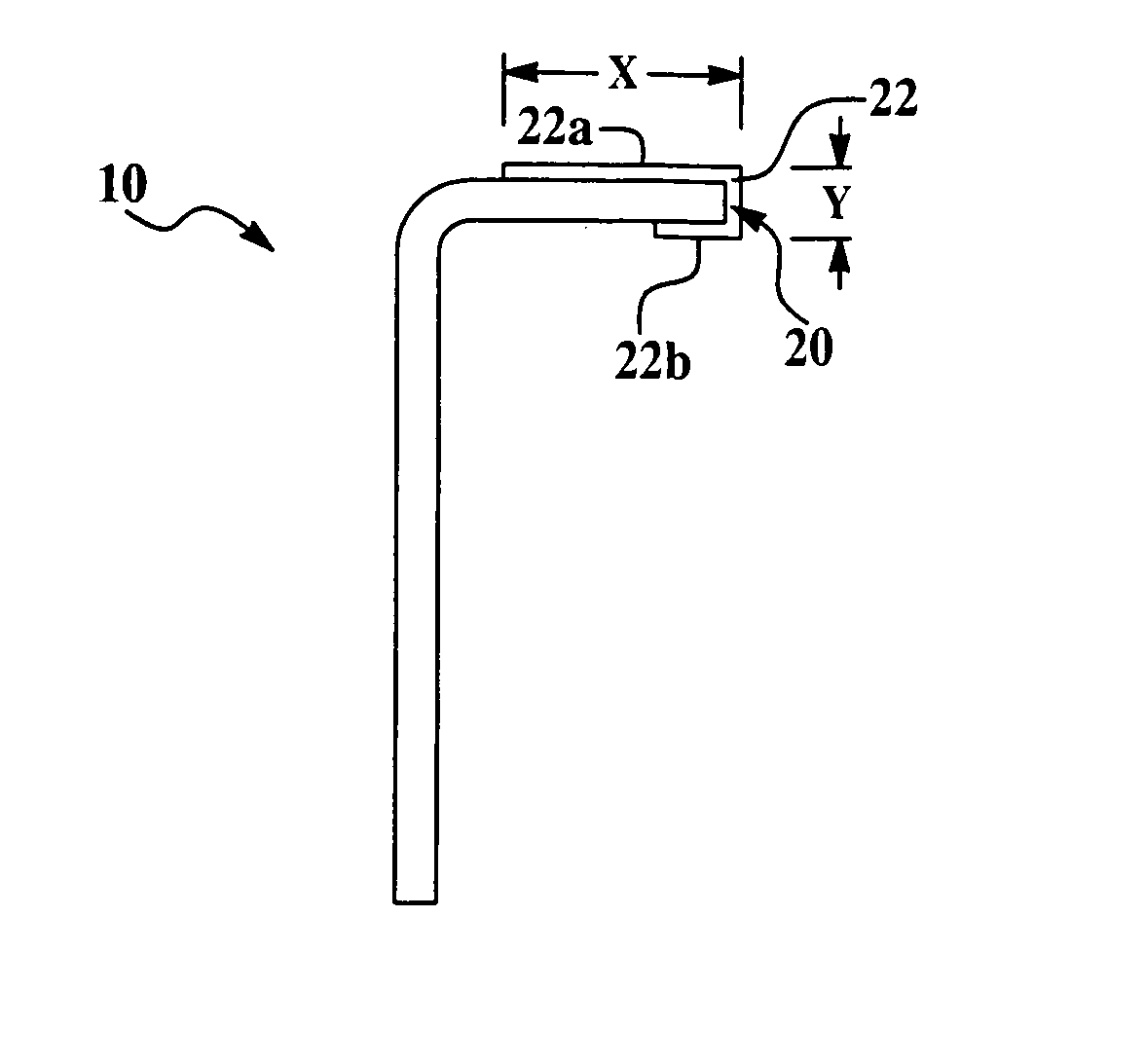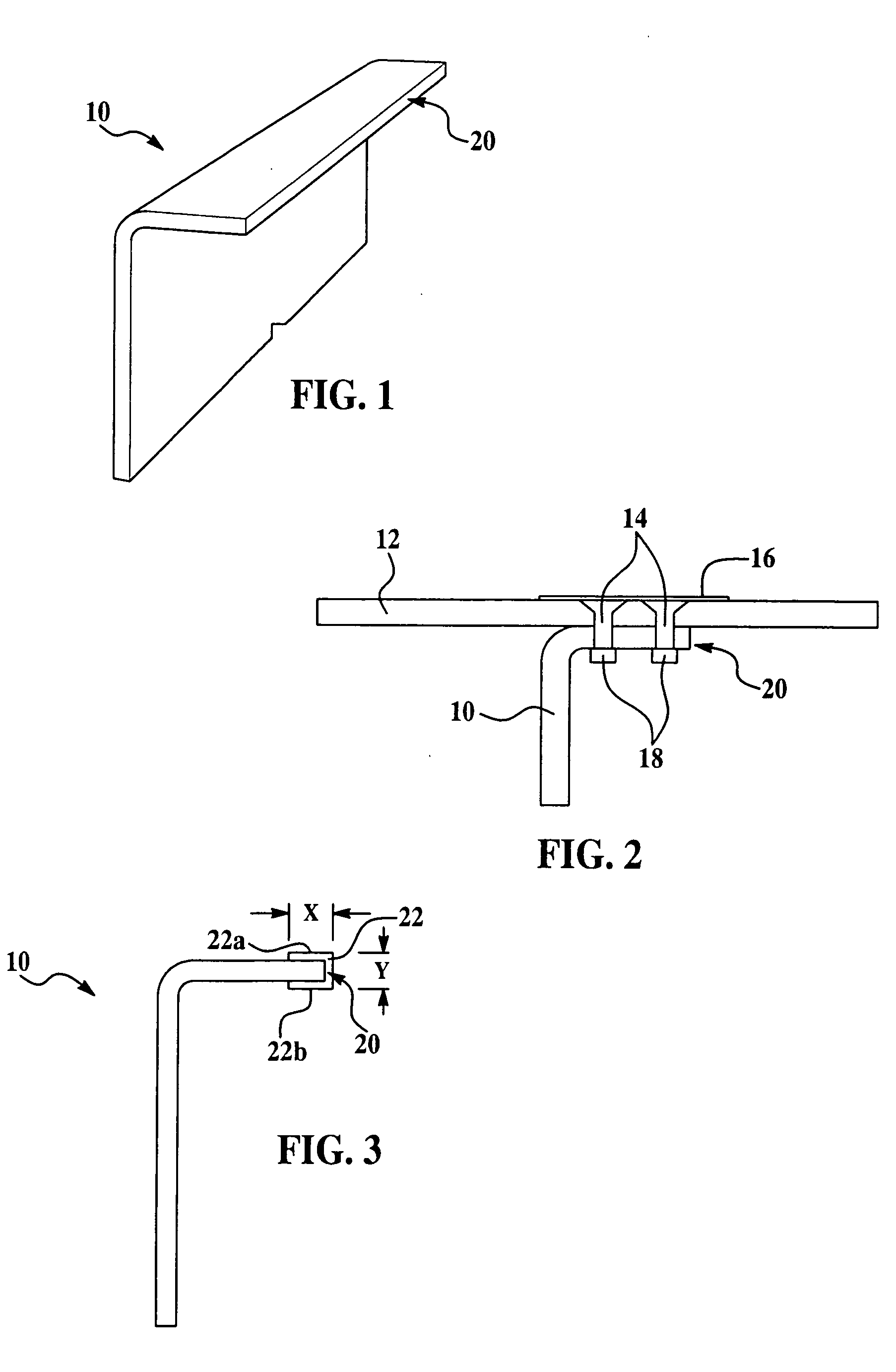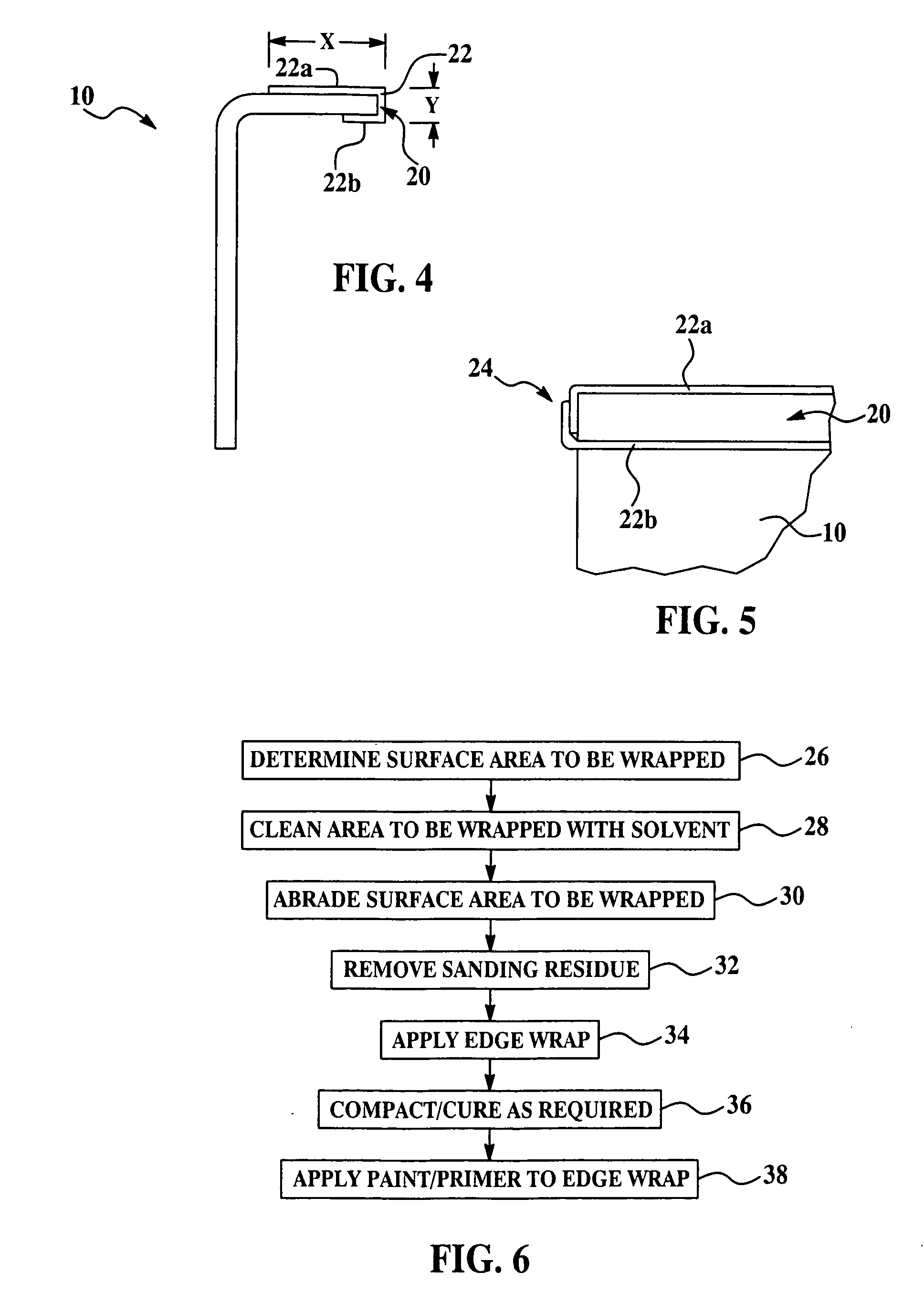Edge seals for composite structure fuel tanks
a fuel tank and composite structure technology, applied in the direction of synthetic resin layered products, mechanical equipment, chemistry equipment and processes, etc., can solve the problems of inefficient application to commercial transportation aircraft, inconvenient installation, and relatively complicated tank geometry
- Summary
- Abstract
- Description
- Claims
- Application Information
AI Technical Summary
Benefits of technology
Problems solved by technology
Method used
Image
Examples
Embodiment Construction
[0021]Referring first to FIGS. 1 and 2, a variety of carbon fiber reinforced polymer composite (CFRP) structural members are commonly employed in aircraft construction, such as a structural spar member 10 which is used to support numerous types of structures. For example, CFRP structural members like the spar 10 are used to fabricate and mount fuel tanks (not shown) in an aircraft. In the illustrated embodiment, the spar 10 is secured to and supports a skin 12, using fasteners 14, which pass through a copper plate 16 forming part of an electrical current diversion system, and are held in place by fastening collars 18. It should noted here that although an L-shaped spar has been selected to illustrate the principals of the invention, a wide variety of other forms of structural members are suitable for use with the present invention, including C-shaped spars which are more commonly used in constructing commercial aircraft.
[0022]The spar 10 is manufactured using conventional layup tech...
PUM
| Property | Measurement | Unit |
|---|---|---|
| thick | aaaaa | aaaaa |
| thick | aaaaa | aaaaa |
| thick | aaaaa | aaaaa |
Abstract
Description
Claims
Application Information
 Login to View More
Login to View More - R&D
- Intellectual Property
- Life Sciences
- Materials
- Tech Scout
- Unparalleled Data Quality
- Higher Quality Content
- 60% Fewer Hallucinations
Browse by: Latest US Patents, China's latest patents, Technical Efficacy Thesaurus, Application Domain, Technology Topic, Popular Technical Reports.
© 2025 PatSnap. All rights reserved.Legal|Privacy policy|Modern Slavery Act Transparency Statement|Sitemap|About US| Contact US: help@patsnap.com



